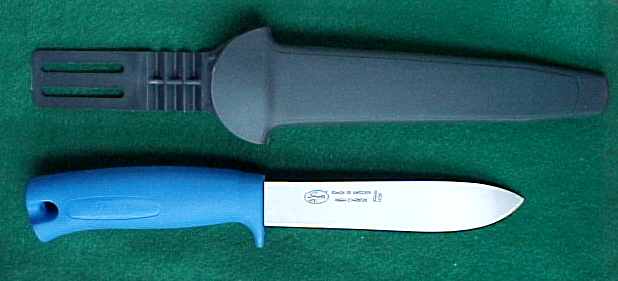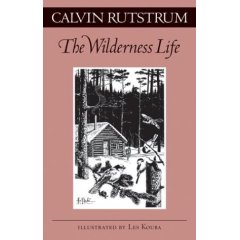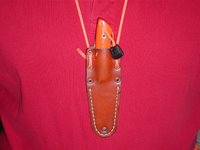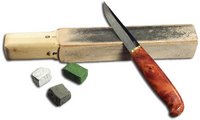Having read about the Swedish Mora Knife for quite some time, and never having owned one, I felt it was time to rectify that situation. The Mora knife is made by Frosts of Sweden and KJ Eriksson.
Blades come in stainless, carbon steel, and laminated carbon steel in a variety of handle shapes and colors. Blades come with a Scandi Grind which means the edge angle is the same all the way up the bevel. Some of the knives ship with a secondary bevel but it's easy enough to take that off with the initial sharpening. When I asked Ragnar about the tempering on the blades this is the response I received, "
As indicated on the web page, the knives you ordered are uniformly hardened. The laminated blades are hard in the center and soft on the sides, the triflex blades (680 and 780) are harder at the edge and softer at the spine."
What does that mean? It means the carbon steel knives can be used to strike pieces of flint and they should throw sparks. That's EXCELLENT news.

I got mine from Ragnar at
Ragweed Forge. This is not my first order with Ragnar and it most certainly won't be my last. The level of service has been excellent and he's got everything (at least everything
I ordered) in stock. Not only does he have Moras of all shapes and sizes but he's got other blades, axes and hatchets, some really neat wooden tableware, and lots of viking jewelry and accessories.
Somehow I managed to pick up 3 carbon steel knives, 3 stainles knives, and a set which included a draw knife and two crooked knives. That's right, 9 knives...plus a noggin.
In general, the handles are a bit oversized but quite comfortable. A few of the knives are shipped with ambidextrous sheaths but they're mostly right-handed only. That's fine by me. Being a Southpaw, I've dealt with right-handed products my entire life.

The Mora 2000 ought to be my favorite, the carbon knives ought to be my favorite, but it's the blue-handled fishing and game knife that really gets me going. Ragnar's got it listed as the S-0125. (
Photo courtesy of RagweedForge.com)
Actually, of the 9 knives I managed to get my hands on several have already been claimed. My daughter immediately snagged the 740 which has a bright red hard plastic handle and a carbon steel blade. She doesn't know that was the knife I bought for her anyway.
After playing with all the blades for a short while I decided to tackle sharpening just to see how it would be done on a Scandi Grind. The basics of sharpening a Scandi Grind are quite simple. Lay the knife flat on the stone, lift the spine of the knife until the bevel is flat on the stone, and take imaginary slices off the top of the stone. Once you've established a wire edge, flip the knife and repeat. Take this process through the various grits until you've got the kind of edge you're happy with.
I used a 10" DMT stone to establish the edge on the Mora 2000 and found it quick work to get the edge and then I just stropped it on my new strop board until it'd pop hairs right off my arm.
Now the Mora 2000 (M2K) has an interesting grind that changes toward the tip of the blade. I only sharpened the part toward the handle as I don't yet know the reason for the changed geometry and don't want to mess it up due to the experiment.
I'm not sure that these knives would replace my standard go-to knives for a trip to the woods but for the weight and price one will surely be along as a loaner for those that need a knife. They're NOT getting my Gameskeeper if they came out into the woods without a knife. I'm a nice guy but I'm not
that nice.
Thanks for reading,
B






